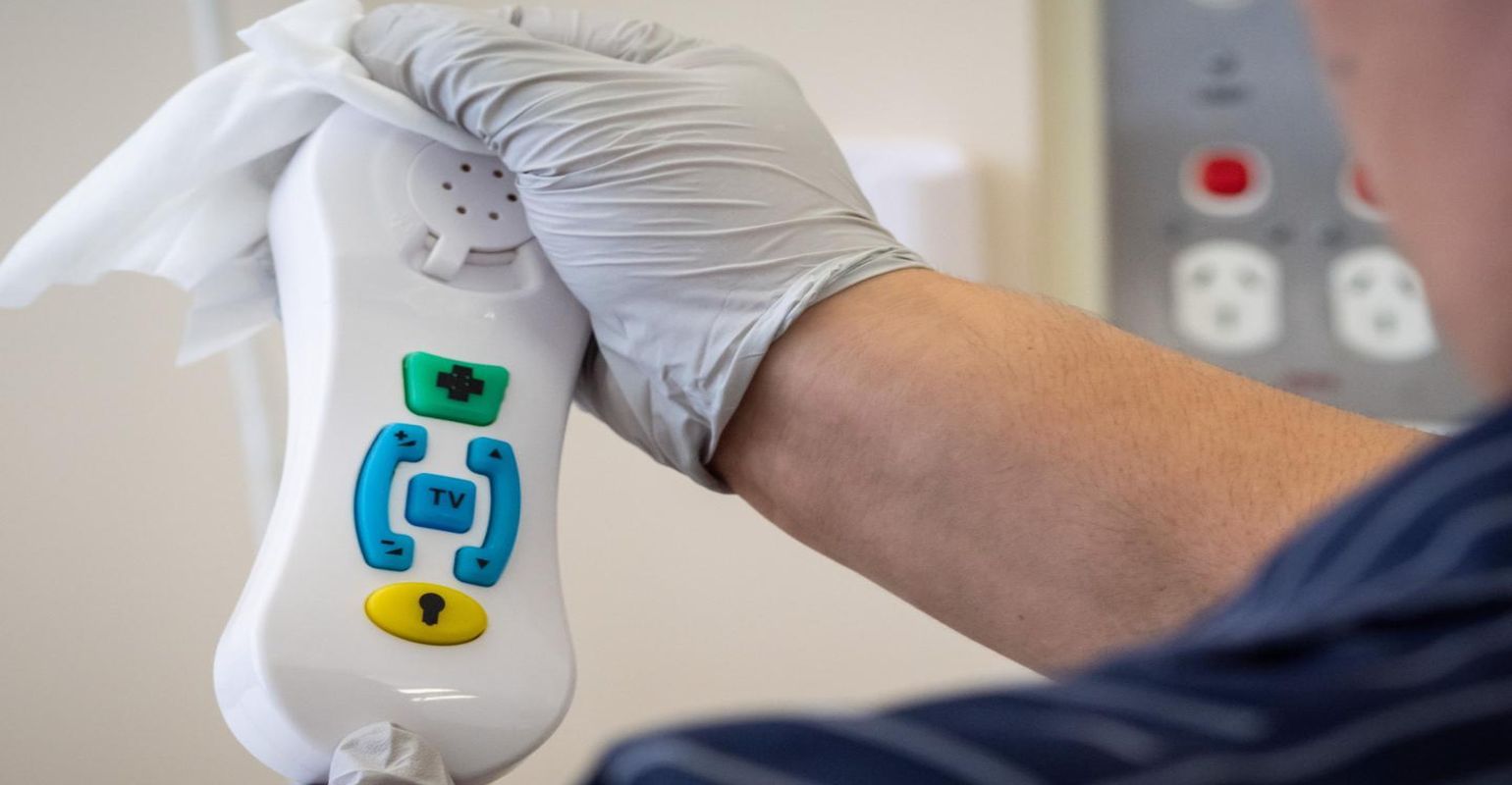Hospital Cleaning Trial Shown to Reduce Infections

A major trial of a bundle of hospital cleaning practices in 11 Australian hospitals has made significant reductions in healthcare-associated infections and demonstrated cost-benefits.
The study, "An environmental cleaning bundle and health care-associated infection in hospitals (REACH): a multi-centre randomised trial," was led by Queensland University of Technology (QUT) health economist Nick Graves from the Australian Centre for Health Services Innovation (AusHSI) at the Institute of Health and Biomedical Innovation (IHBI) and published in The Lancet Infectious Diseases. It was funded by Australia's National Health and Medical Research Council.
"This research project is believed to be the largest prospective, multi-site and multifactorial trial of hospital cleaning in the world," Graves said. "Its aim primarily was to investigate whether a change in cleaning practices was effective in reducing the 165,000 healthcare-associated infections in Australia each year."
Graves said the REACH (Researching Effective Approaches to Cleaning Hospitals) project introduced a bundle of cleaning initiatives, tailored to each hospital in the study, to improve both routine and discharge hospital room cleaning. Hospital-wide promotion of the importance of cleaning in reducing infections was undertaken to support a culture shift in the profile of environmental services staff, Graves said.
"Cleaning was audited using fluorescent marker technology. This system used gel dots, invisible to the naked eye, applied to surfaces. The dots resist dry abrasion and are removed only by a thorough cleaning technique," he said. "Hospitals in the study improved their cleaning practices from 55 percent to 76 percent in bathroom areas and from 64 percent to 86 percent in bedroom areas. This resulted in a 37 percent reduction in the major healthcare-associated infection, vancomycin-resistance enterococci (VRE), and a 5.8 percent decrease overall in three types of infections. In contrast to previous research, the cleaning bundle development prioritized evidence-based strategies that were easy to implement and lower cost, over newer expensive technologies. Overall, the cleaning bundle cost approximately $2,500 per 10,000 bed days to implement in participating hospitals."
The REACH cleaning bundle was successful at improving cleaning thoroughness and showed great promise in reducing vancomycin-resistant enterococci infections. It also demonstrated cost-savings and increased health benefits from infections prevented.
The intervention is broadly applicable to cleaning in any hospital, throughout the continuum of care, as it does not solely focus on discharge cleaning. Future publication of the economic outcomes of the study will provide valuable information for decision makers about the potential for investing in future hospital cleaning initiatives.
Source: Queensland University of Technology
Vet IP Roundtable 2: Infection Control and Biosecurity Challenges in Veterinary Care
March 31st 2025Veterinary IPs highlight critical gaps in cleaning protocols, training, and biosecurity, stressing the urgent need for standardized, animal-specific infection prevention practices across diverse care settings.
Invisible, Indispensable: The Vital Role of AHRQ in Infection Prevention
March 25th 2025With health care systems under strain and infection preventionists being laid off nationwide, a little-known federal agency stands as a last line of defense against preventable patient harm. Yet the Agency for Healthcare Research and Quality (AHRQ) is now facing devastating cuts—threatening decades of progress in patient safety.
From Shortages to Security: How Reusable Health Care Textiles Can Transform Infection Prevention
March 7th 2025Reusable health care textiles enhance infection prevention, reduce waste, and strengthen supply chains. Hygienically clean textiles offer a sustainable, cost-effective alternative to disposable PPE, ensuring patient safety and environmental responsibility.